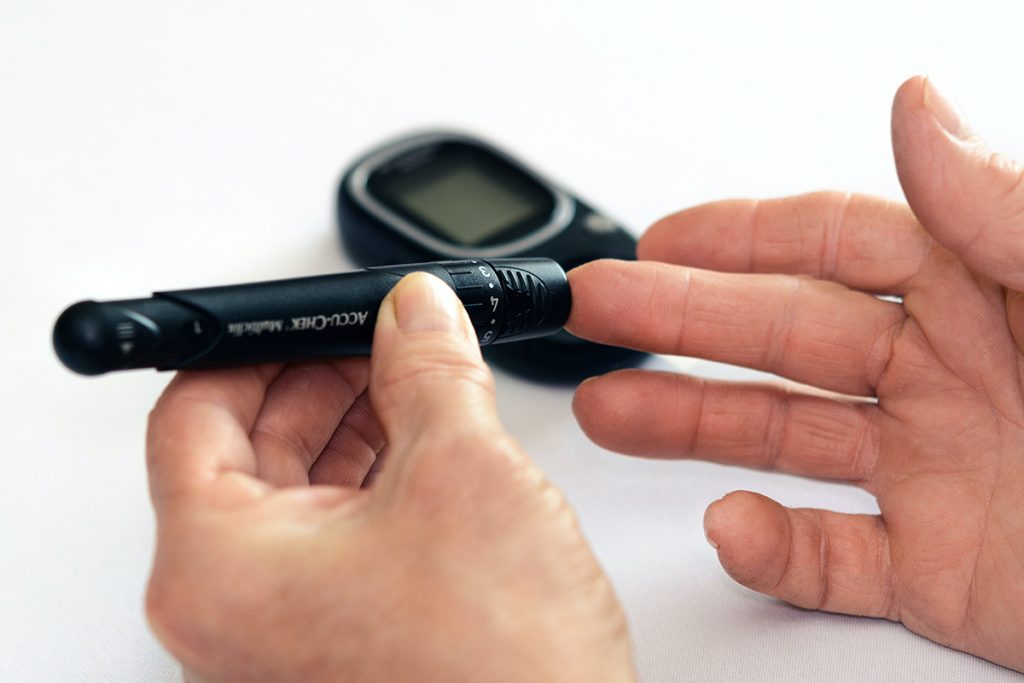With the turning back of clocks comes cooler weather and the tentative onset of preparations for the festive season. Our daily wardrobe may start to look significantly cosier as November begins, but it’s not just our jumpers and scarves that are feeling fluffy. The upper lips of men everywhere may be looking decidedly fuzzier as Movember moustaches start to take shape.
In their own words, the Movember campaign, whose name is comprised of a portmanteau of ‘moustache’ and ‘November’, wants… “to have an everlasting impact on the face of men’s health”.
Founded in Melbourne, Australia in 2004, the men’s health charity with a Hercule Poirot-esque moustache as its symbol had relatively humble beginnings. That year, a group of just thirty men, keen to raise awareness and funds for important issues in men’s health, left their top lips unshaven and allowed their moustaches to grow throughout the month of November. The trend drew a groundswell of support from Australians, encouraging five hundred people to take part the following year, raising 40,000 AUS dollars for the Prostate Cancer Foundation of Australia.
Since then, the Movember message has spread far and wide. Mo Bros and Mo Sisters (as supporters of the charity are known) work to bring key issues in men’s health to the forefront each November, with fundraising and awareness events taking place in workplaces, gyms, barbershops and many more places across Europe, South Africa and North America.
Why men’s health?
The Movember campaign’s focus is clear: reducing the high rates of preventable deaths amongst men. Put simply, too many men are dying early and unnecessarily. The charity’s work centres around three key areas of men’s health where preventable deaths occur frequently; prostate cancer, testicular cancer and mental health.
Movember and prostate cancer
Prostate cancer is the most commonly diagnosed form of the disease in Australian men. Around the world, more than 1.4 million people are living with the condition and a British charity, Prostate Cancer UK, estimates that one in every eight men will develop prostate cancer in their lifetime. Fortunately, thanks to continued research and advances in treatment, prostate cancer survival in the UK has tripled in the last forty years.
However, as with many forms of the disease, early detection is vital in fighting prostate cancer. The symptoms of prostate cancer can be similar to those caused by benign (non-cancerous) enlargement of the prostate, which is usually harmless and occurs as part of the natural ageing process. Unfortunately, this crossover in symptoms means many men put off seeing a doctor about any changes they notice, putting any symptoms down to ageing.
As well as funding research to broaden our understanding of prostate cancer, Movember’s campaign aims to educate men on when to seek medical advice about the symptoms of the disease and helps to support men through their treatment and recovery from prostate cancer. Movember funds a range of support services and outreach programmes around the world, including Under The Hood, a guide on sex and intimacy for men who have recovered from prostate cancer.
Movember and testicular cancer
Although survival rates of testicular cancer are generally good (91% in England and Wales), some men require extensive treatment, such as chemotherapy, to eradicate the disease. As well as educating men on the symptoms of testicular cancer and empowering them to seek medical advice when needed, Movember works to support men all over the world with their mental health and wellbeing while they undergo treatment for testicular cancer through outreach projects like the ManVan, which operates in Wales to provide local support for men living in rural areas.
Movember and mental health
Also at the heart of the Movember campaign is men’s mental health and suicide. As the charity states:
“Men, regardless of age group, often don’t recognise when they’re experiencing a mental health issue, and may not be comfortable asking for help. The uncomfortable truth is that some stereotypical forms of masculinity are killing men.”
Sadly, the number of people who die by suicide in the UK is on the increase, with the Office for National Statistics reporting 5219 cases of death by suicide in England alone in 2021, an increase of more than 300 compared to 2020.
According to the same report, men in England are significantly more likely to take their own life than women, at a rate of 15.8 in every 100,000 men, compared to 5.5 per 100,000 women. This trend is reflected across Northern Ireland, Scotland and Wales, with men being at increased risk of death by suicide. In fact, The Scottish Public Health Observatory reported in 2021 that Scottish men are three times more likely to take their own life compared to women.
Why are men at greater risk of suicide?
The reasons behind men’s increased risk of suicide are complex but, as the Movember campaign states, stereotypes in society play a significant role.
Toxic masculinity is a term that refers to exaggerated features, considered to be typically masculine according to societal norms, which can be harmful to men themselves and the people around them. Typically, these traits relate to stoicism, struggling silently with problems or bottling up feelings, or to showing aggression rather than other emotions like sadness, anxiety or vulnerability.
Social pressure on men to conform to these behaviours, to ‘man up’ or ‘grow some balls’ when facing emotional stress can be harmful to their mental health and can severely limit their access to help when it is needed. Bottling up emotions and concealing mental health difficulties from loved ones can have serious consequences for a person’s mental and physical wellbeing, may make them less likely to seek out expert help and can unfortunately lead to suicidal ideation as a solution.

How does the Movember campaign support men’s mental health?
Movember’s mental health campaign has four central aims:
- to put systems in place to support men struggling with their mental health
- to challenge how aspects of toxic masculinity affect men’s mental health and address issues that prevent men from seeking help
- to motivate men to communicate and connect with loved ones openly
- to encourage people to speak more freely about mental health in everyday life – for instance at work, sports clubs and gyms and other places people socialise – rather than exclusively with a doctor or therapist
Funds raised in Movember support a number of projects which build mental health support networks for men all over the world. One such project is FarmStrong, a New Zealand based outreach wellbeing programme which helps isolated agricultural workers and farmers to connect and access support. Another of the charity’s projects is the Making Connections initiative, which is based in the United States and facilitates social opportunities for men at risk of mental health problems, such as military veterans.
Additional to its outreach services, Movember’s website has invaluable practical advice on how to speak to a loved one who you are concerned about, as well as guidance and a support directory for men who are seeking help themselves.
What can moustaches do for mental health?
Although the Movember campaign has some vitally important issues at its heart, leaving your razor untouched for the month of November may not feel like a very active way to break down stigma about men’s mental health.
However, given that the moustache is so symbolic of a traditional, or even old-fashioned, image of masculinity, sporting one on your top lip and rebranding it as an icon of changing attitudes to the importance of mental health support for men is, in fact, very powerful.
Thanks to the work of Movember, growing a moustache in November now serves as a striking visual reminder of the campaign’s efforts and symbolises both support for the cause and openness to conversations about mental health. Indeed, as the moustache-growing challenge is so easily accessible, it allows people in workplaces, gyms and a variety of other social spaces to organise fundraising events and facilitates conversations about mental health amongst peers, colleagues, team members and friends.

The Distinguished Gentlemen’s Ride, an annual international motorcycle ride-along, is another example of the Movember campaign’s work to modernise and update societal perceptions and bring more people along on their mission.
In 2012, one man in Sydney, Australia, Mark Hawwa, wanted to change the rhetoric on male bikers. Tired of negative stereotypes about male motorcyclists and their aggressive and chauvinistic behaviour, he planned what would be the first of many group motorcycle rides to unite bikers in sophisticated, gentlemanly attire to challenge the prejudice.
Following the first event’s instant success, the ride-along adopted the Movember cause and since then, has brought bikers together worldwide to support men’s health, with events taking place in almost every country in the world – from Malaysia to Kazakhstan to Uruguay.
The annual Distinguished Gentleman’s Ride helps to raise funds for men’s mental health projects which offer life-saving support, provide opportunities for social connection and encourage an open conversation about mental wellbeing. This year’s ride, which took place in April 2022 in over 1,000 cities around the world, continues to reframe perceptions about masculinity and motorbiking.
Support for men’s health in the stands
Motorcyclists are not the only ones looking to open up conversations about men’s mental health in places where they may not have existed before. This June, as Norwich City fans eagerly waited to see their team’s latest kit launch, they were surprised to hear instead from Stephen Fry, renowned mental health advocate and diehard Norwich City FC fan and former board member.
Stephen Fry, president of the UK mental health charity Mind and beloved actor and comedian, has spoken frankly about his own struggles with manic depression, bipolar disorder and suicidal thoughts in the past and has been a highly influential figure in breaking taboos about mental health in the UK.
Although statistical facts can sometimes be hard to take in, ‘Not just another kit launch’ and its illustration of the crossover of male suicide figures and Canaries (Norwich City supporters) season ticket holders show the vast numbers of men who lose their lives to suicide every year in the UK in a way that is impossible to ignore.
The impact of open conversations about mental health
In 2009, Mind published a report into men’s mental health in the UK called ‘Get it off your chest’, which collected data from men from all walks of like on a number of key areas related to mental wellbeing. Factors such as alcohol or drug use as a means of coping with emotional anxiety and social media and its impact a person’s mood were analysed amongst many others to give a detailed image of men and their mental health in the UK.
In 2019, the charity republished the report with comparative data taken exactly ten years later to show how trends in men’s mental health have changed in the last decade. Unfortunately, some of the report’s findings make clear that many men still experience suicidal thoughts when worried or feeling low.
However, the report does highlight that in 2019, men were three times as likely to see a therapist if suffering from poor mental health compared with 2009. Despite the continued challenges that men face when managing mental health struggles, the value of opening up conversations on mental health and removing any stigma about seeking help is clear.
From growing a Movember moustache in solidarity, raising funds or by simply sharing the campaign’s message, there are many ways to help save lives and make “an everlasting impact on the face of men’s health…”
If you are struggling with poor mental health and would like to speak to a specialist, you can find the UK’s leading psychologists and psychiatrists with Top Doctors.
If you are experiencing suicidal thoughts, it’s important that you tell someone you trust and get help straight away. There are a number of people ready to help you or someone you love who is considering suicide.
Mind has a number of resources for anyone struggling with their mental health, including emergency advice, crisis resources and helplines.
The Samaritans also has a free helpline for anyone in distress which is available 24 hours a day, 365 days a year.
The charity Mental Health UK has a list of free helplines available in England, Wales, Scotland and Northern Ireland.


























